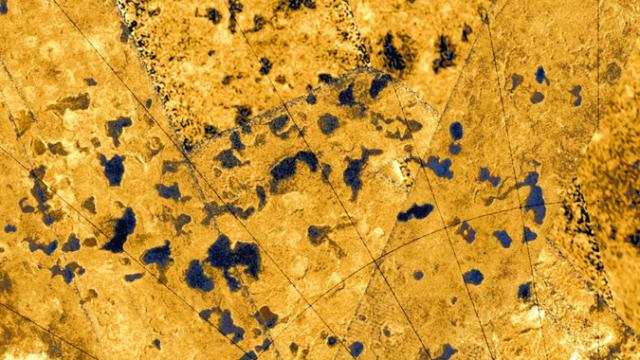Despite the obvious similarities, this isn’t another satellite shot showing the Droughtpocalypse engulfing California. Instead, it’s a radar scan of methane-filled lakes on Titan, Saturn’s largest moon.
The images were taken by the international Cassini mission, as part of a study into what forms depressions on Titan. Although scientists have a handle on why the lakes are filled with hydrocarbons — turns out it rains liquid methane, thanks to the -180C climate — the origins of the depressions are less obvious, a problem Cassini has been working to solve:
A team of scientists have turned to home for the answer and discovered that Titan’s lakes are reminiscent of ‘karstic’ landforms seen on Earth. These are terrestrial landscapes that result from erosion of soluble rocks such as limestone and gypsum in groundwater and rainfall percolating through rocks. Over time, this leads to features including sinkholes and caves under humid climates, and salt-pans under more arid climates.
The rate of erosion depends on factors such as the chemistry of the rocks, the rainfall rate and the surface temperature. While all of these aspects clearly differ between Titan and Earth, the underlying process may be surprisingly similar.
In other words: the liquid hydrocarbons that form the lakes are dissolving Titan’s surface, at a rate of around 300 feet every 50 million years.
[ESA]
Picture: NASA/ESA
